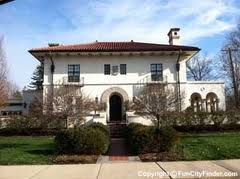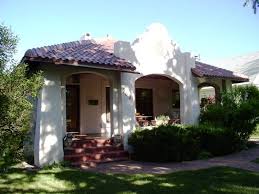Encyclopedia Dubuque
"Encyclopedia Dubuque is the online authority for all things Dubuque, written by the people who know the city best.”
Marshall Cohen—researcher and producer, CNN
Affiliated with the Local History Network of the State Historical Society of Iowa, and the Iowa Museum Association.
MISSION ARCHITECTURE
MISSION ARCHITECTURE. The Mission Revival Style was an architectural movement that began in the late 19th century which drew inspiration from the late 18th and early 19th century Spanish missions in California.
The missions' style Revolved around an enclosed courtyard, using massive adobe walls with broad unadorned plaster surfaces, limited openings and door piercing, low-pitched roofs with projecting wide eaves and non-flammable clay roof tiles, and thick arches. Exterior walls were coated with white plaster (stucco), which with wide side eaves shielded the adobe brick walls from rain. Other features included long exterior arcades, an suite of interior rooms and halls, semi-independent bell gables, and at more prosperous missions curved 'Baroque' gables on the principal facade with towers.
These architectural elements were copied, in varying degrees, accuracy, and proportions, in the new Mission Revival structures. Simultaneous with the original style's revival was an awareness in California of the actual missions fading into ruins, their restoration campaigns, and nostalgia in the quickly changing state for a 'simpler time.'
Contemporary construction materials and practices, earthquake codes, and building uses result in the structural parts primarily serving as decoration, while the service elements such as tile roofing, solar shielding of walls and interiors, and outdoor shade arcades and courtyards are still functional.
---
Source:
Mission Revival Architecture. Wikipedia. Online: http://en.wikipedia.org/wiki/Mission_Revival_architecture



